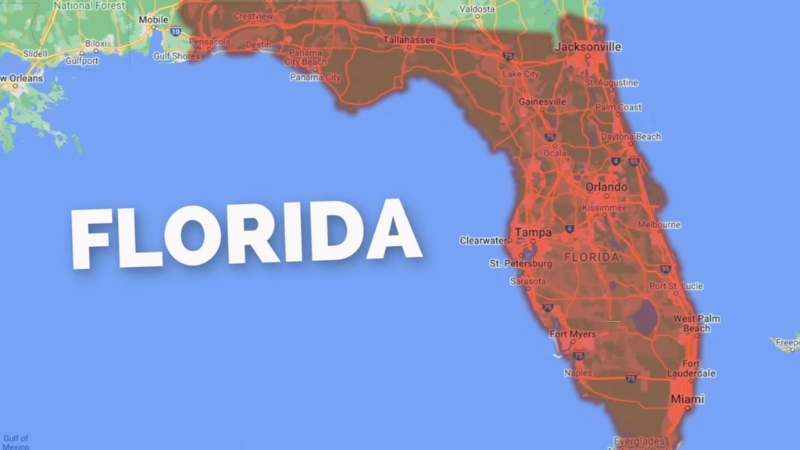Coastal populations are growing rapidly across the globe. This surge is visible in the expansion of waterfront cities and the mounting toll from stronger storms and rising sea levels. Despite this clear trend, accurately measuring the scale of these population changes has been a challenge—until now.
One sociologist from Mississippi State University and a computer scientist from Oak Ridge National Laboratory, tackled this issue using innovative data from Oak Ridge. This dataset combines census information, satellite imagery, and advanced data science techniques, allowing us to map the growth of coastal populations worldwide.
What studies found was striking: an overwhelming number of people—around 10% of the global population—live within just 5 kilometers (3.1 miles) of the coast. Another 5% reside in the zone between 5 and 10 kilometers (6.2 miles) from the shore. Beyond these distances, population numbers drop off sharply.
Table of Contents
ToggleA Significant Portion of Humanity Lives Near the Coast
In 2022, the United Nations estimated that the global population surpassed 8 billion—a remarkable growth of 1 billion people in just over a decade.
Research, from Oak Ridge Laboratory’s publicly available dataset, revealed that in 2018 over 2 billion people—about 29% of the world’s population—lived within 50 kilometers (31 miles) of a coastline.
Remarkably, half of those individuals—more than 1 billion people, or roughly 15% of the global population—were concentrated within just 10 kilometers (6.2 miles) of the shore.

If you imagine the globe, it’s striking to realize that 15% of the world’s population resides on just 4% of the planet’s inhabitable land.
Coastal areas are magnets for people for several reasons. These regions often host economic hubs, providing abundant job opportunities, access to trade, and vibrant, diverse communities. Additionally, they offer proximity to natural resources, such as fisheries, and opportunities for recreation.
Research shows that between 2000 and 2018, the number of people living within 10 kilometers (6.2 miles) of the coast grew by roughly 233 million—a 28% increase.
This is comparable to adding 23 megacities, each with 10 million residents (about twice the population of the Miami metropolitan area), right along the world’s shorelines.
Expensive Risks
Today’s #WorldWetlandsDay spotlights our most vulnerable ecosystem.
Nearly 50% of coastal wetlands have been lost over the last 100 years, as a result of the combined effects of localised human pressures, sea level rise, warming & extreme climate events.https://t.co/zAMzd12lR7 pic.twitter.com/uB7FbXk4EG
— IPCC (@IPCC_CH) February 2, 2024
Where people choose to live has significant consequences, especially along coastlines, where exposure to risks is heightened.
Rising sea levels are driving an increase in high tide flooding, more severe storm surges during hurricanes, and widespread erosion.
In parts of the world, such as Southeast Asia and the Pacific Islands, saltwater intrusion has begun to affect farmland and contaminate freshwater supplies.
Hurricanes and typhoons, which draw energy from warm ocean waters, have grown more intense as global temperatures continue to rise.
Coastal ecosystems, including delicate mangroves, wetlands, and coral reefs, are particularly vulnerable to the growing human presence. The accompanying infrastructure development and pollution further strain these vital ecosystems.
Where Does the Population in Florida Live?

Florida is one of the fastest-growing states in the U.S., now ranking third in population behind California and Texas, with 23 million residents as of April 2023. The state has been adding 350,000–375,000 new residents annually this decade, driven entirely by net migration, as deaths have outpaced births. This reflects a broader trend of migration to Southern U.S. states.
From 2020 to 2023, Florida’s population growth was concentrated in specific counties. The fastest-growing counties were:
- Sumter County: 16% increase
- Walton County: 14%
- Flagler County: 13%
- Nassau County: 12%
- Osceola County: 12%
Pasco and Polk Counties also experienced 12% growth.
In contrast, some counties saw population declines, including:
- Monroe County: 3% decrease
- Calhoun, Hamilton, and Lafayette Counties: 2% decrease
- Bradford County: 1% decrease
Liberty and Taylor Counties also experienced a 1% decline.
Florida’s population growth has been fueled by record migration, with more people moving to the state from other parts of the U.S. than ever before. However, Florida’s population is aging rapidly; by 2030, nearly a third of its residents will be 60 or older, a 34% increase from 2012.
Coastal Populations Are Rapidly Expanding
Coastal population growth is a global phenomenon, but the most significant increases are occurring on two continents: Asia and Africa.
Currently, Asia dominates the coastal population, housing 60% of the world’s coastal inhabitants. This includes four of the five most populous countries—China, India, Indonesia, and Pakistan. In comparison, Africa accounts for 12% of the coastal population, while Europe has 11%, North America 9%, and South America 7%.
Africa, however, is experiencing the fastest coastal population growth. Between 2000 and 2018, the continent’s coastal population grew by 61%, adding 58 million people within 10 kilometers of the ocean. Asia saw a 25% increase in the same period, adding 125 million people near its coasts.
For example, Ghana, in West Africa, has experienced a population doubling over the past 30 years, with the greatest density along its coastline. This trend reflects broader patterns in both continents: Asia and Africa collectively accounted for 78% of global coastal population growth during this period.
Across continents, coastal population growth follows a strikingly similar pattern. The densest populations are found closest to the shore, with numbers rapidly declining further inland. Despite significant cultural, economic, and historical differences, this pattern persists globally.
References:
- Energy – DOE Public Access Plan
- The Conversation – High-tide flood risk is accelerating, putting coastal economies at risk
- Nature – Coastal Population Growth and Risks
Related Posts:
- Number of Federal Employees of US in 2025 - How Many…
- The Number of People Living in Poverty in US Cities…
- What’s the Legal Difference Between a Certificate of…
- Health Statistics and the Rising Costs of Personal…
- Rising Dementia Risk and Its Burden on the United…
- Oregon’s Population Is Rising, but The Pace Has…








